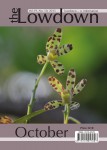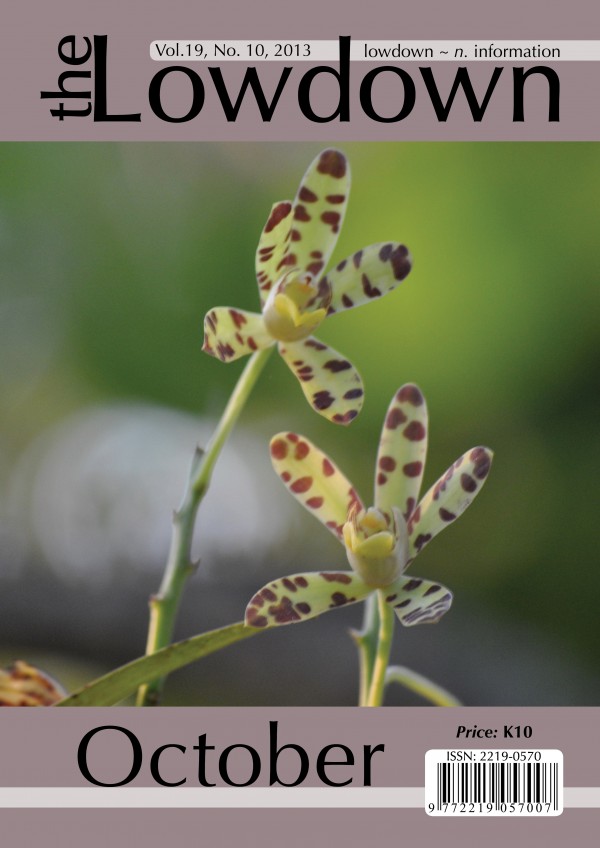GM Zero
 Anyone who keeps reasonably in touch with current affairs, both local and international, will not have been able to avoid reading about GMO (genetically modified organisms.)
Anyone who keeps reasonably in touch with current affairs, both local and international, will not have been able to avoid reading about GMO (genetically modified organisms.)
The GMO controversy is a dispute over the comparative advantages and disadvantages of genetically modified food, genetically modified crops used to produce food and other uses of genetically modified organisms in food production. The debate involves all strata of society – consumers, biotech companies, government regulators, NGO’s and scientists. The main areas of discussion are whether GM food should be labelled, the effect of GM crops on health and the environment, the effect on pesticide and herbicide resistance, the impact of GM crops for farmers, and the role of GM crops in feeding the growing world population.
The aspect which should first and foremost be considered is whether GM-derived food poses a health risk to consumers. Amongst the scientific community there seemed to be, until recently, broad agreement that there is no greater health risk from GM-derived food than from conventionally produced food. However this is questioned by advocacy groups who believe that GM-derived foods have not been around long enough for the longer term effects to be established. They also believe that tests conducted showing the safety of GM-derived foods have not been of sufficient duration; a period of ninety days has been mentioned! The same advocacy groups have also questioned the objectivity of the regulatory authorities when approving GM-derived foodstuffs in places such as the USA where the power and greed of the biotech companies come into play. According to the American Academy of Environmental Medicine “several animal studies indicate serious health risks associated with GM foods”. GE foods have been linked to infertility, GI issues, organ damage, insulin and immune dysfunction and death. Thousands of sheep, buffalo and goats grazing on GE cotton in India have died.”
GM crops currently account for twenty nine percent of crop production worldwide, with the USA growing fifty nine percent of global GM crops; Argentine at twenty percent and so on down the list of Canada, Brazil, China, Paraguay and India until we get closer to home (and from where a lot of our foodstuffs come,) South Africa at one percent of global GM crops.
Just four countries on the African continent allow GM crops to be grown commercially – South Africa, Egypt, Burkina Faso and Sudan. As recently as 2008, South Africa was the only African country which allowed it and the majority of soya beans and maize grown in South Africa is genetically modified, making it the only country in the world where the staple food is a GMO. A recent study (in South Africa) of fifty eight off-the-shelf randomly selected food products found that seventy six percent of them tested positive for GM. These included infant and baby cereals, breakfast cereals and porridges. There are no labelling requirements for GM-derived food in South Africa, as well as very little consumer awareness despite GM crops being grown commercially since 1997.
The labelling of GM-derived foods does not have any bearing on whether GM-derived foods are safe to eat or not. Rather, transparency through labelling gives the consumer the power to decide what kind of foods are served on their dinner tables. Over 60 countries around the world have regulations concerning the labelling of foods produced using GM products.
Actual labelling modalities, however, are complicated with issues such as feasibility, legal responsibilities, coherence and standardisation in mind. But there are some basic principles which must be applied:
– if genetically modified plants or microorganisms have been used in production, this must be clearly indicated.
– in products such as meat, eggs and milk, if the animals have been fed GM-derived stockfeed, such products should be labelled accordingly
– when the need for GMO labelling a product has been determined, the wording and placing of this label must be very specific and the label should be highly visible.
– labelling should also required for foods which are offered by restaurants, takeaways or other dispensers of prepared foodstuffs.
The issue of labelling and indeed anything to do with GM-derived products would be dealt with in Zambia under the Biosafety Act (which was enacted in 2007) under the watchful eye of the National Biosafety Authority, the board of which was finally put in place in July this year. It is early days yet to make a judgement on how this Authority is going to perform. As the arm of Government that is charged with ensuring the safety of Zambians from any harmful effects that may arise from GMO’s, they have a big task ahead of them. Whilst the controversy rages regarding the safety of GM-derived food, a good start would be to put in place requirements for labelling of any products which contain GMO’s so that Zambians can make their own choices.
National CARDres?
 Although a globalising world is popularly propagated, it doesn’t take much more than the FIFA World Cup process or a well-publicised battle for top office in a UN Agency to explode the myth. A feverish alignment invariably occurs amongst competing countries representing millions of people often with little in common but ashared language or national flag!
Although a globalising world is popularly propagated, it doesn’t take much more than the FIFA World Cup process or a well-publicised battle for top office in a UN Agency to explode the myth. A feverish alignment invariably occurs amongst competing countries representing millions of people often with little in common but ashared language or national flag!
So with respect to our very important 49th Anniversary of Independence which falls on the 24th of October, I felt a need to reflect on two documents that ‘officially’ bind us as a nation. No! This is not another article about the Barotseland Agreement or the dated Rhodesian Federation.
Briefly, the Zambian Identity Documents (ID’s) that may grant privileged access to restricted government buildings and sometimes bursaries, will occasionally stretch to allowing you to cross a friendly border for the day to sight-see or buy a few groceries. They are (1) Your Zambian National Registration Card and (2) Your Zambian Passport.
Driving licenses; personalised telephone, rental, electricity or water bills; and voter cards carry very little weight when your nationality is being scrutinised. But it is worth noting that “proof of residence” is assumed by your holding such. Evidence of “proof of residence” has reached cult-like status when dealing with institutions governed by the Companies Act and perfectly ordinary forms carry the instruction to give “Full permanent residential address (not PO Box).” But does that not regularly translate correctly into just “Zambia” for our highly mobile population?
One of the more memorable experiences I had with the Department of National Registration rang Orwellian. After decades of memorising my NRC number there was a time when completing a routine form that I made a mistake. The response in both speed and efficiency made me doubt my “full and permanent residential address” for a few seconds. Its tone held the same finality as the standard cell phone message “The number you have dialed is not a valid one!” Only, in my case, the letter came in the signature buff envelopes of Zambian officialdom and through the regular post from the pension authority.
I recall going cold, and only fully recovering when I realised that (a) the number quoted was definitely not mine, and (b) I had wrongly transposed a couple of digits. My sense of belonging restored, the error was corrected and I was not so promptly issued with the social security number for which I had applied.
Holding a Zambian NRC of course restricts the public-political ‘space’ we call ours, and by nature of its function the Zambian Passport limits our physical ‘space’. However, in my reflection on Zambian-ness, this little exercise took me to pondering our newly ‘nationalised’ sim-cards. Consider if you will how the prevailing technological advances have bestowed upon us a new ID – and to what extent its special character will restrain our private ‘space’?
Happy Independence Day!
By Chuundu
